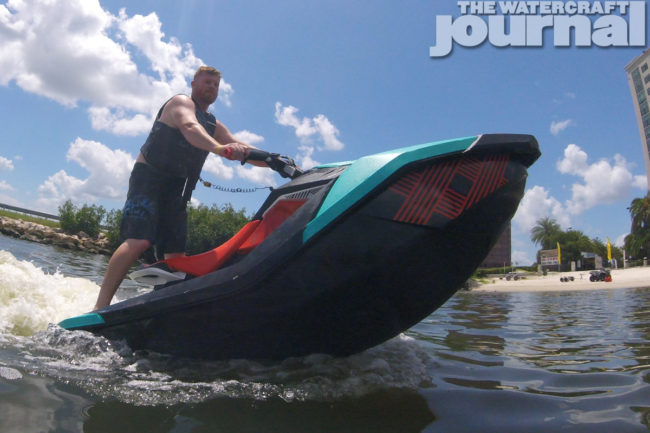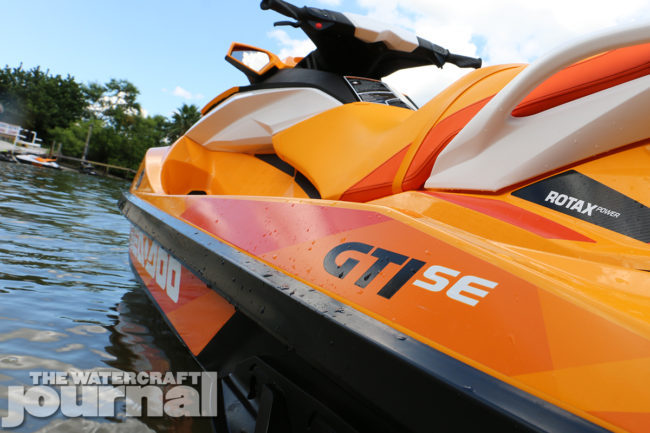
Predicting the future, particularly with no true means to inside developmental intelligence, is pretty tough to do. Every now and again, my position within the media allots me a brief snapshot into what might be coming around the immediate bend, but a sincere, honest-to-goodness pull-back-the-curtain sort of look is pretty tough to do without being an employee of the company itself. When a prediction is made, it’s often done so with a pathfinder’s ear to the trail; you might be able to sense vibrations and predicate whether the footfalls are traveling fast or slow, and a rough estimate of how far away. That’s pretty much it.
So when I publish not one but several articles espousing the same prediction(s) again, and again, and again, it’s worth taking notice. Now, as all of the year’s revelations have been dealt to the public I’m able to review those predictions I made and with affirmation say boldly, “See? I told you so.” Normally, I wouldn’t gloat but for this year in particular, many older and (self-presumed) wiser readers chose to doubt my assertions pertaining to Sea-Doo’s next moves, even going so far to openly berate me and the magazine on social media. Sure, I could be the bigger man and let it slide, but I’m feeling particularly petty today and would like to rub their collective noses in it.

A Sea-Doo Standup: I can see how many would think the initial investment on Sea-Doo’s behalf to develop a standup ski would be, at most, minimal. Much if not all of the electronics, powertrain and auxiliary systems could be harvested from a 90-horsepower Spark HO and dropped in a standup hull. Many enthusiasts even encouraged the use of the brand’s lightweight Polytec material. And as this is certainly possible it remains very improbable. Why? Because Sea-Doo is interested in two things: volume and new (first time) owners, and standup skis simply do not have the numbers to back it. (To date Kawasaki has sold just over ’17 SX-R 1,000 units compared to Sea-Doo’s 12,000 Sparks this year.) We debunked this in July here.
So Long Suspension: This too we called back in July and was pretty easy to predict, yet I received quite a bit of push-back. Sales of Sea-Doo’s suspension-equipped units were never really the runaway hit that most would have liked. Beginning with the first iS (Intelligent Suspension) RXT iS 255 and GTX Limited iS 255 for 2009, the system was heavy, complicated and expensive. Add to it costly and time-consuming service hours, and things added up quickly. It wasn’t long before the “adjust-on-the-fly” iS was replaced with self-regulating version, before becoming completely mechanical (requiring a socket wrench to tighten/loosen). For the RXT-X, a racier “aS” system was offered for a few short years before being dropped back in late 2014. For those still wanting one, the final GTX 155 S is still available as a 2017 model.

Consolidating CM-Tech: This was the first of the big predictions that we got right, and we made it back in February. Companies do not spend literally millions of dollars in developing a entirely new molding process just for a single model, unless they plan to sell tens of thousands of them a year (ie. Spark). That’s why the introduction of the new CM-Tech material on the 2017 GTR-X 230 introduced last year was such a big deal. Sea-Doo ditched its conventional molding process for laying multi-layer thermoformed sheets of acrylic and ABS into the mold before the fiberglass is injected, resulting in a high gloss acrylic finish that is more resistant to chipping and cracking due to the flexible nature of the acrylic sheets.
So again, why is this a big deal? Because for 2018, every single runabout on the ST³ platform, and all of Sea-Doo’s GTI/GTS models are now made with CM-Tech. Heck, both the deck and hull of the ST³ units are made from the stuff. Technicians and tuners will appreciate the smooth inner surface (no more itchy, irritated skin thanks to fiberglass strands), and Sea-Doo has its own proprietary process that they don’t need costly licensing agreements to contend with. It’s a pretty big win-win for the brand. Oh, and speaking of the ST³ platform, we called a new “offshore/rough water” hull for 2018 in July as well.

Popularizing Polytec: This one I’m particularly proud of because Sea-Doo actually tried to bury it. Well, kinda. In late 2016, when introduced to the then-new 2017 lineup, the reveal of the 90-horsepower ACE 900-powered GTS, GTI and GTI SE was overshadowed by the Trixx. (And understandably so, the Trixx outsold every other PWC in the market. Literally. I’m not joking. The Sea-Doo Spark Trixx was the best selling PWC in 2017. Crazy!) What was significant about the change to the GTS/GTI was the addition of the Polytec hull material to the larger craft. Right then, I predicted that this was a harbinger of things to come and reiterated it two more times.
Many scoffed, saying, “The bigger horsepower 130 and 155 Rotax would tear the motor mounts out of the Polytech hull. There’s no way they’ll do it.” Well, for 2018 many thought they didn’t…that is until I looked closer at the Wake 155. Yup, not only had Sea-Doo integrated the Polytech hull on a GTI-based runabout with the larger Rotax NA 1503, but did so on one of its more popular models. The 155-horsepower Wake indeed comes with a Polytech base and CM-Tech deck, dropping the weight to 718-pounds over the previous 799-pounds. An 81-pound drop is significant, yet interestingly, Sea-Doo made zero fanfare over the move. Sure, there’s still a handful of GTIs with optional fiberglass hulls, but it is likely all will be Polytec by next year. And the GTI-based supercharged GTR and GTR-X 230? We’ll have to wait and see when/if those transition as well.
Go Get Wet,
Kevin








I didnt berate you personally over the stand up debate. But I am certainly a champion of the idea. As you noted the Spark Trixx was the number 1 selling pwc in 2017. ( and yes 1 is sitting in my garage with 48 hrs on it) but guess what? Mid season I went out and bought a Stand up because as an experienced rider I needed more of a challenge. I love my trixx but nothing beats launching of wakes or waves on a stand up! And BRP should think about the fact that millenials have grown up in the X GAMES era. With an emphasis on extreme sports. A polytec stand up hull with the trixx drivetrain would sell like hot cakes in the 7-10k price range. (Their bread and butter market). And even if they made it in a limited run of production it would just help with the demand of the age old Supply and Demand cliche. Thx for reading! Keep up the great work! -James